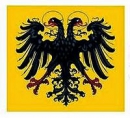John McCain took a brief respite from his long campaign to dispossess Americans to hang out with his new friends in Syria. McCain and his fellow travelers have transitioned from confident predictions that the reign of Bashar al-Assad is on its last legs to an angry insistence that America must supply the rebels with arms in over to overthrow him. Senator Rand Paul made the obvious point that America is war weary and the Syrian rebels are far more likely to assist al-Qaeda than the supposedly evil Assad. One suspects that McCain’s insistence on allying with terrorists and cannibals comes from his fanatical hatred of Putin than any supposed support for democracy.
Still, the situation in Syria has an importance that goes beyond the usual neoconservative stupidity and treason. It’s a model for the ethnopolitical future that the short sightedness of politicians like McCain is creating for what was once the United States.
The Syrian Civil War is less a battle for control of the state than an ethnic grudge match. Even years after the beginning of the conflict, a map of government and rebel controlled territory lines up almost exactly with the distribution of ethnic groups within the country. Almost a year ago, Tony Badran of The Weekly Standard pointed out that Assad’s strategy for survival is similar to that of the Crusaders—an interesting comparison considering that the Weekly Standard is apparently taking the side of Saladin. As Hezbollah has now declared its intention to openly back Assad (along with Iran), the conflict between Christians, Shiites, and Alawites against Israeli and American backed Sunnis is explicit.
Bashar al-Assad touched on a profound truth when he declared that unless he was victorious, it would be the end of Syria. Syria, as a meaningful entity, only exists because of Assad’s authoritarianism and Baathist ideology, an Arab nationalism deliberately intended to transcend sectarian differences. Absent this power and at least rhetorical ideological support, Syria will likely revert precisely into the divided regions it existed as during French rule.
The United States of America is backed by a similarly artificial foundation, the powerful civic creed of “Americanism” and the promise of eternal national prosperity. Colin Woodward created a model of the “Eleven Nations of North America,” as a guide to the cultural and economic components of the American Imperium and the similarly artificial Canadian entity. If anything, Woodward’s model underestimates the extent of North American divisions, as it neglects the critical importance of racial conflicts within these “nations,” from Blacks and Whites in Dixie to the tensions between Whites and American Indians in the Far West.
Like tectonic plates, the fault lines of race, ethnicity, geography, and culture lie beneath the political issues of the day. To paraphrase Lord Palmerston, constituencies don’t have friends, they have interests, and rhetoric is simply an after-the-fact justification for those interests. “American exceptionalism” notwithstanding, if the federal system ever fails to deliver the goods, even for a brief moment, the American future could look a lot like the Syrian present.






 del.icio.us
del.icio.us
 Digg
Digg
Les commentaires sont fermés.